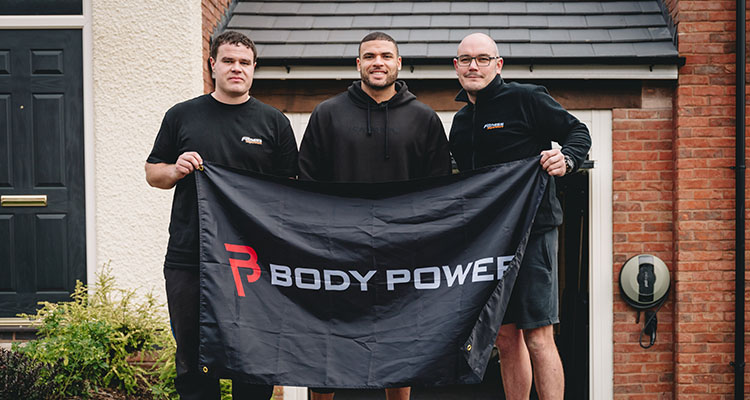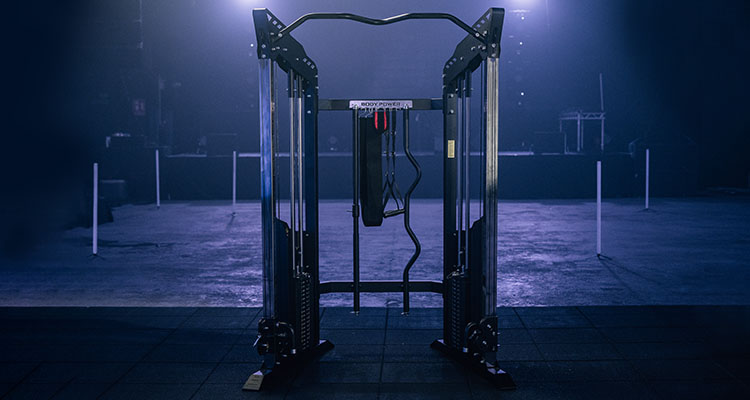We asked a PT the strength training questions everyone wants to know the answers to
More and more people are starting to introduce strength and endurance training into their fitness programme, which is fantastic news! Strength training is so important. In fact, the NHS recommends that adults perform strengthening exercises for all major muscle groups at least twice a week. Below, I answer some commonly asked questions I receive from clients who are new or relatively new to strength training...

1. Why is strength training so good for you?
I say this to clients frequently – the benefits of strength training are vast! Not only is it a hugely efficient way to reduce body fat, increase lean muscle mass and burn calories, but it's also integral to overall long-term fitness and physical ability.
Consistent strength training:
~preserves muscle mass as you age – lean muscle mass decreases naturally over time, and body fat increases, unless you introduce strengthening exercises.
~increases bone density and reduces risks of osteoporosis.
~increases your metabolism so that you can burn calories faster.
~increases your ability to perform everyday activities.
~protects joints from injury.
~helps manage chronic conditions, such as arthritis, fibromyalgia, depression and diabetes.
2. Which type of strength training is best for beginners?
There are different types of strength training – endurance, hypertrophy (strength) and power. Depending on what you want to achieve, your training will be different. So, a power lifter will strength train in a different way to a footballer, for example. That said, whether you have aspirations to power lift, or simply want to reduce body fat and increase lean muscle mass, a beginner is a beginner and I will always encourage endurance training first, in order to build up strength. The majority of people will want to stick
with endurance and/or strength training, which will provide all those benefits listed above.

3. So, what exactly is endurance training?
Endurance training is training with a higher number of repetitions with lighter weights. This training is very popular in group fitness classes as it's accessible to all, whatever your ability. A combination of free weights, such as dumbbells, resistance bands and kettlebells, and body weight training (press ups, planks, squats etc.) are ideal. You could also use assisted gym equipment such as multi-gyms, or a leg press. When I start with clients, we will generally start with sets of 12-16 reps of any exercise. This should be challenging, but not so hard that form is lost. So, you could perform bicep curls as follows: 12-16 reps, 2-3 sets, 30-60 secs rest between each set. You can then mix things up more by introducing supersets (2 exercises back to back with no rest e.g. shoulder press followed by shoulder taps), tri-sets (three exercises back to back) , Pyramid sets (increasing weight and decreasing reps with each set, or visa versa) and so on. Tempo i.e. speed of reps, can also be played with once you're familiar with exercises, as this will keep the muscles guessing and work them harder. I recommend beginners start with total body training, so sessions should generally work all the major muscle groups, i.e. back, chest, shoulders, legs.
4. Is it OK to do strength training every day?
Generally, I wouldn't recommend strength training every day. This is because your body needs time to recover. It's far more effective to strength train 4 times per week (this can be total body - recommended for beginners - or you could break it down into body areas e.g. “Leg Day”, “Arms and Core Day” etc.) and work harder as you've allowed recovery time. Not enough rest could result in injury, boredom or training plateaus. It can even result in muscle imbalances if you don't ensure all muscles are worked. For example, if you train every day but always work the upper body, that lower body is going to be far weaker in comparison.

5. Is 30 minutes of strength training enough?
Absolutely! Lots can be achieved in half an hour if you're efficient with your time. I often have to grab 30 mins for training with my busy juggle between clients and parenting! Focus, know what you're doing and don't mess around with your phone between sets. That 30 sec rest soon turns into 3 mins when distracted!
6. Is it OK to mix cardio and strength training?
Yes! In fact, this is one of my fave ways to train. I like to do HIIT workouts, but I almost always include weights in these workouts. So, I might do 45 secs of burpees, and have weighted squats as my next exercise. I'll always go hard and fast on the cardio exercises and slow it right down and perform controlled moves for the strength. I will often do 1-2 sessions per week like this.

7. How many days a week should you do strength training?
This is up to you, and dependent on time you have available, but generally no less than twice a week is recommended. For beginners, I suggest 2-3 times per week. When more confident (probably about 5 weeks in), I suggest upping this to 3-4 to really make a difference. Personally, I try to strength train 4-5 times per week (using a combination of free weights and body weight exercises) but at least one of those sessions will be a HIIT session, which will also include some cardio. Although strength training offers many of the benefits cardio does (and more), I will always suggest doing some cardiovascular exercise to complement your training. I teach group cycle classes 4 times per week, so that's my cardio covered but you could do running, cycling, brisk walking, or a sport of some kind.
Hopefully that covers all your strength training questions, but feel free to get in touch if you have any others!









